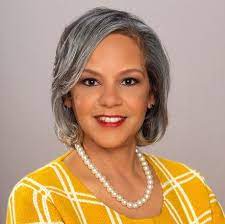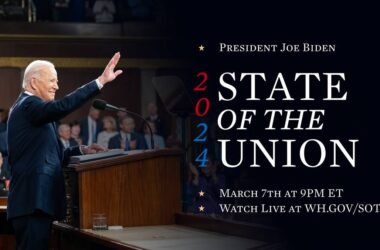Mooresville, SC–(ENEWSPF)–June 6, 2013 – 3:03 P.M. EDT
THE PRESIDENT: (Applause.) Hello, Mooresville! (Applause.) Hello, Mooresville. It is good to be back in North Carolina. (Applause.) Now, first of all, I want to thank my staff for being smart enough to schedule a visit right before school lets out. (Laughter.) Because that means everybody is in a good mood. (Laughter.) However, Principal Tulbert told me that if I wanted to visit, I had to follow school rules. And since we just recited the Pledge of Allegiance, let me say that, “It’s always a great day to be a Red Imp.” (Applause.) I gather some of you are going to be Blue Devils next year. (Applause.) Being an Imp is okay, but I guess being a Devil — (laughter.)
I want to thank Maureen for the wonderful introduction, but more importantly, for the great work that she and all the staff at this school are doing. I could not be more impressed with the teachers and the administrators. So give it up for them. Students, clap for your teachers. (Applause.) You may not realize how lucky you are to have great, dedicated teachers, but as a parent, I realize how important that is. And so we can’t thank them enough.
I want to make sure everybody knows that we’ve got one of the finest Secretaries of Education we’ve ever had in Arne Duncan, who’s here. (Applause.) Your Mayor, Miles Atkins, is in the house. (Applause.) And Superintendent Edwards is here, who’s doing such great work. So give him a big round of applause. (Applause.) So I want to thank you for inviting me here today. I know it’s a little warm in here, as it always is in a school gym. But I was spending a lot of time talking to the students, and they were showing me such incredible work that I got kind of carried away.
I’ve come here to Mooresville to announce an important step that we’re taking to grow our economy and to reignite the engine that powers our economy — and that’s a rising and thriving middle class where everybody has opportunity.
Over the past four and a half years, we have been fighting back from the worst recession since the Great Depression, which cost millions of Americans their jobs and their homes and the sense of security that they’ve worked so hard to build. And North Carolina got hit worse than a lot of states.
But thanks to the grit and the determination of the American people, folks are starting to come back. Our businesses have created nearly 7 million new jobs over the past 38 months; 530 [thousand] of those jobs are new manufacturing jobs that help us sell goods made in America all around the world. We’re producing more of our own energy. We’re consuming less energy from other countries. The housing market and the stock markets are rebounding. Our deficit is shrinking. People’s retirement savings are growing. The American auto industry has come roaring back.
So we’re getting traction. The gears to the economy are turning. We’re starting to make progress. But we’ve got to build on that progress. Because while the economy is growing, there’s still a lot of families out there who feel like they’re working harder and harder but can’t get ahead. And the middle class has to be prospering — not just folks at the very top. That’s got to be our focus: a growing economy — (applause) — we’ve got to have a growing economy that creates good, middle-class jobs. That’s got to be the North Star that guides all of our efforts.
Now, what that means — I said this in my State of the Union address — every day, we’ve got to ask ourselves three questions as a nation. Number one, how do we make America a magnet for good jobs? Number two, how do we make sure our workers, our people, have the skills and education they need to do those jobs? And then, number three, how do we make sure that those jobs pay well so that hard work leads to a decent living?
But the reason I’m here today is because you are helping to answer that second question: How do we make sure Americans have the chance to earn the best skills and education possible? That’s why I came to Mooresville. Because at a moment when the rest of the world is trying to out-educate us, we’ve got to make sure that our young people — all you guys — have every tool that you need to go as far as your talents and your dreams and your ambitions and your hard work will take you. (Applause.)
So that’s the spirit that’s reflected in the motto of your school district — “every child, every day.” It’s that fundamental belief that no matter who you are, no matter what you look like, no matter where you come from, every child can learn. Every child can succeed. Every child, every day, deserves that chance. We’ve got an obligation to give every young person that chance. (Applause.)
And that means making sure we’ve got the best teachers and giving those teachers support and paying them what they deserve. (Applause.) Yes. All the teachers say, amen.
AUDIENCE: Amen!
THE PRESIDENT: It requires parents who are more active and involved. Parents, school is not a passive thing where you just dump off your kids, they come back and somehow automatically they learn. You’ve got to be involved in the education process. It requires smarter schools that are safer places to learn. And in an age when the world’s information is a just click away, it demands that we bring our schools and libraries into the 21st century. We can’t be stuck in the 19th century when we’re living in a 21st century economy.
And that’s why, today, we’re going to take a new step to make sure that virtually every child in America’s classrooms has access to the fastest Internet and the most cutting-edge learning tools. And that step will better prepare our children for the jobs and challenges of the future and it will provide them a surer path into the middle class. And, as a consequence, it will mean a stronger, more secure economy for all of us.
Specifically, today, I am directing the Federal Communications Commission, which is the FCC, to begin a process that will connect 99 percent of America’s students to high-speed broadband Internet within five years. Within five years we’re going to get it done. (Applause.)
Now, those of you here at Mooresville understand why this is important, but I’m speaking to a larger audience, so I want to explain why this is important. Today, the average American school has about the same bandwidth as the average American home, even though obviously there are 200 times as many people at school as there are at home. Only around 20 percent of our students have access to true high-speed Internet in their classroom. By comparison, South Korea has 100 percent of its kids with high-speed Internet. We’ve got 20 percent; South Korea 100 percent. In countries where — in a country where we expect free Wi-Fi with our coffee, why shouldn’t we have it in our schools? Right? (Applause.) Why wouldn’t we have it available for our children’s education?
So the good news is, here in Mooresville, you’ve committed yourself to this cause. Starting in the third grade, as all of you know because you’ve lived through it, every student in the district gets a laptop and high-speed, wireless Internet in the classroom.
And I just saw the ways that it’s changing how you learn. You don’t just write papers and take tests. You’re working together on videos and presentations and movies and poetry. Your high school Spanish class might Skype with students in Barcelona or Buenos Aires. One student proudly said, “We’re able to work on more projects and homework outside of class.” Now that’s not normally something teenagers brag about. (Laughter.) But that’s exactly the attitude that’s going to help you succeed and help your country succeed.
And as I was learning in talking to some of the teachers here, it’s helping the teachers, too. Because if a student is falling behind, a teacher is seeing it in real time.
Did somebody fall down? One thing you guys got to do, by the way — bend your knees a little bit when you’re standing. If you stand up straight — I’m just giving you a tip so you don’t faint — (laughter) — which happens all the time, and it’s really embarrassing. (Laughter.) But if you already did, you should sit down.
But it gives teachers the ability to see in real time what students need help, who is falling behind, and then offer extra help. If you’ve already mastered a lesson, you can move on to the next one. So as one teacher said, “The thing I’m most proud of is not the technology, it’s the relationships I can build with the students that I teach.”
Now, here at this school, this has only been going on for a few years. But so far, the results have been remarkable. Graduation rates are up. Last year, out of 115 school districts in North Carolina, you ranked in the bottom 10 in the amount of money you spend per student, but you ranked number two in student achievement. Number two. (Applause.) So you’re spending less money getting better outcomes. And around the country, educators have started to take notice. So many people want to see this school for themselves that there’s a waiting list for tours all the way into 2014.
But here’s the thing: As special as what you’ve done is, I don’t want this success to be restricted to one school or one school district. There is no reason why we can’t replicate the success you’ve found here. And imagine what that will mean for our country.
Imagine a young girl growing up on a farm in a rural area who can now take an AP biology or AP physics class, even if her school is too small to offer it. Imagine a young boy with a chronic illness that means he can’t go to school, but now he can join his classmates via Skype or FaceTime and fully participate in what’s going on.
Imagine educators spending fewer hours teaching to a test, more time helping kids learn in new and innovative ways. Imagine more businesses starting here and hiring here in this area, in North Carolina, because they know for a fact that we’ve committed ourselves to equipping all of our kids with better skills and education than any place else on Earth. That’s what we need. (Applause.)
So over the next five years, we’re going to partner with private companies to put people to work laying fiber optic cables to our schools and setting up wireless connections in our schools with speeds 10 to 100 times faster than what most schools have today. We’re going to work with states to give teachers who want to use these technologies in the classroom the professional development that they need, because I was talking to Ms. Tulbert and she said, for all the teachers here, it took some adaptation to get used to these new technologies.
Once all these classrooms are wired for superfast Internet, that means a big new market for private innovation — America’s companies who created the computers and smartphones and tablets that we all use —
AUDIENCE MEMBER: (Inaudible.)
THE PRESIDENT: It’s okay. This happens. They’ll be all right. Just give them a little space. That’s why we’ve got the medics here. They’ll be okay.
Oh, teachers give me some tips here. I’ve lost their attention. (Laughter.) All right, everybody. Right over here.
So what we’re going to be able to do is to get companies to compete to create affordable digital devices designed specifically to these new connected classrooms. I want to see a tablet that’s the same price as a textbook. (Applause.) I want to see more apps that can be instantly updated with academic content the day it’s available, so you don’t have old, outdated textbooks with student names still in them from years ago. These are the tools that our children deserve.
And there’s no reason we can’t do all this. If you think about the history of America, we united a continent by rail. We stretched a network of highways from sea to shining sea. We brought light to dark and remote areas. We connected the world through the Internet, through our imagination. All these projects created jobs. All these projects grew our economy. They also unified the country and they are unifying the world. And this project we’re talking about today can do the same thing. I am determined to see it through on behalf of our kids. (Applause.)
And for those of you who follow politics in Washington, here’s the best news — none of this requires an act of Congress. (Applause.) We can and we will get started right away. Yes, we can. (Applause.) Look, there are all kinds of things I do need Congress to do, and I want to work with them everywhere I can. But where we’ve got an opportunity to just go ahead and do something that’s going to help our young people, help our teachers, help our education system, help this economy, help our middle class, help to create jobs, we’ve just got to go ahead and do it. (Applause.) This is something we have to do for the sake of our kids and our future.
But there are other things that I’m going to be working with Congress to do that will improve our education system on behalf of our kids and our future. Because if we can bring our kids and our schools into the digital age, you can’t tell me we can’t start improving our early-childhood education system and making high-quality preschool available to every child in America. (Applause.)
You can’t tell me that we can’t find the wherewithal to hire even more good teachers in science and math and technology and engineering.
You can’t tell me that we can’t rethink and redesign our high schools, or partner with colleges and businesses to put our young people on the path of jobs — not just today’s jobs, but tomorrow’s jobs.
We can make sure that middle-class families aren’t priced out of a college education. We can make sure that interest rates on federal student loans don’t double for students and parents at the end of this month. (Applause.) I want to work with Democrats and Republicans to keep those rates low.
How many students here expect to go to college? I expect all of them to raise their hand. (Applause.) So we’ve got to make sure that college is affordable for every young person, and that’s going to require some help from Congress.
But we have to give every child, every day, the shot at success that they deserve. Every day. (Applause.) FDR once said, “We cannot always build the future for our youth, but we can build our youth for the future.” And as long as I’m President, I’m going to keep fighting with everything I’ve got to build a better future for our young people and to give them a chance to build their own future. That’s how we’re going to strengthen our middle class. That’s how we’ll secure America’s future for generations to come. That’s what I’m going to fight for as President of the United States. That’s why I’m so proud of all of you here at Mooresville.
Congratulations, everybody. Have a great summer. God bless you. God bless America.
END
3:22 P.M. EDT
Sourcwe: whitehouse.gov








